Related Research Articles

The XVIII Airborne Corps is a corps of the United States Army that has been in existence since 1942 and saw extensive service during World War II. The corps is designed for rapid deployment anywhere in the world and is referred to as "America's Contingency Corps". Its headquarters are at Fort Bragg, North Carolina.
During World War II, Operation Pastel was the deception plan scheduled to protect Operation Olympic, the planned invasion of southern Japan. Pastel would have falsely portrayed a threat of an American-led invasion against ports in China via attacks on Formosa.

Operation Paperclip was a secret United States intelligence program in which more than 1,600 German scientists, engineers, and technicians were taken from former Nazi Germany to the U.S. for government employment after the end of World War II in Europe, between 1945 and 1959. Conducted by the Joint Intelligence Objectives Agency (JIOA), it was largely carried out by special agents of the U.S. Army's Counterintelligence Corps (CIC). Many of these personnel were former members, and some were former leaders, of the Nazi Party.

The Western Front was a military theatre of World War II encompassing Denmark, Norway, Luxembourg, Belgium, the Netherlands, the United Kingdom, France, Italy, and Germany. World War II military engagements in Southern Europe and elsewhere are generally considered as separate theatres. The Western Front was marked by two phases of large-scale combat operations. The first phase saw the capitulation of Luxembourg, Netherlands, Belgium, and France during May and June 1940 after their defeat in the Low Countries and the northern half of France, and continued into an air war between Germany and Britain that climaxed with the Battle of Britain. The second phase consisted of large-scale ground combat, which began in June 1944 with the Allied landings in Normandy and continued until the defeat of Germany in May 1945.
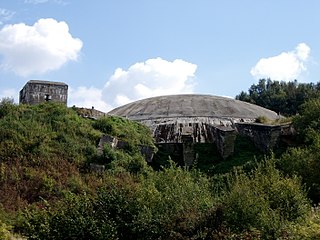
Crossbow was the code name in World War II for Anglo-American operations against the German long range reprisal weapons (V-weapons) programme. The main V-weapons were the V-1 flying bomb and V-2 rocket – these were launched against Britain from 1944 to 1945 and used against continental European targets as well.
The 4th Mountain Division was established in October 1940. It took part in the 1941 Balkans Campaign and then joined Army Group South in Operation Barbarossa after it was already underway. In 1942 it participated in the failed attempt to seize the Caucasus in Operation Edelweiss under Army Group A. Following the operation's failure, the division was pushed back into the Kuban bridgehead, then the Crimean Peninsula, the western Ukraine, Hungary, and Slovakia. The division surrendered to the Soviet forces near Czech city of Olomouc when the war ended in May 1945.

The 5th Mountain Division was a World War II division of the German Army. It was established in the Wehrkreis XVIII in October 1940, out of units taken from the 1st Mountain Division and the 10th Infantry Division. Its first action was in the 1941 Balkans Campaign, when it took part in Operations Marita and Merkur; in the latter it was used in an air-landing role. In November, it returned to Germany for refitting, and in April 1942 it was deployed to the Eastern Front, where it joined Army Group North on the Volkhov Front. In April 1943 it was redeployed to Italy. It fought out the remainder of the war in Italy and the Western Alps, and surrendered to the U.S. Army near Turin in May 1945.
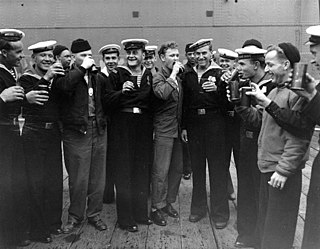
The Soviet–Japanese War, known in Mongolia as the Liberation War of 1945 was a military conflict within the Second World War beginning soon after midnight on 9 August 1945, with the Soviet invasion of the Japanese puppet state of Manchukuo. The Soviets and Mongolians ended Japanese control of Manchukuo, Mengjiang, northern Korea, Karafuto, and the Chishima Islands. The defeat of Japan's Kwantung Army helped bring about the Japanese surrender and the termination of World War II. The Soviet entry into the war was a significant factor in the Japanese government's decision to surrender unconditionally, as it made apparent that the Soviet Union was not willing to act as a third party in negotiating an end to hostilities on conditional terms.
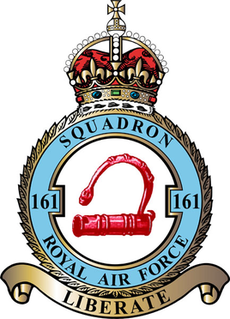
No. 161 Squadron was a highly secretive unit of the Royal Air Force, performing missions as part of the Royal Air Force Special Duties Service. It was tasked with missions of the Special Operations Executive (SOE) and the Secret Intelligence Service (SIS) during the Second World War. Their primary role was to drop and collect secret agents and equipment into and from Nazi-occupied Europe. The squadron had a secondary role in acting as the King's Flight.
The V Fighter Command is an inactive United States Army formation. It was last assigned to Fifth Air Force, based at Fukuoka AB, Japan. It was inactivated on 31 May 1946.

Arab al-Shamalina also known as Khirbat Abu Zayna was a Palestinian Arab village in the Safad Subdistrict. It was depopulated during the 1947–1948 Civil War in Mandatory Palestine on May 4, 1948, under Operation Matate (Broom), a sub operation of Operation Yiftach. It was located 13 km southeast of Safad near the Jordan River.

Al-Muftakhira was a Palestinian Arab village in the Safad Subdistrict. It was depopulated in the 1948 War on May 16, 1948, by the Palmach's First Battalion during Operation Yiftach. It was located 25.5 km northeast of Safad.
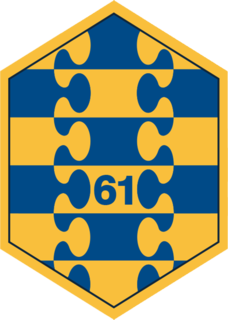
The Los Angeles Garrison is a United States Space Force unit assigned to the Space Systems Command. The unit is stationed at Los Angeles Air Force Base, California. It is the successor to the 61st Air Base Group of the United States Air Force, which existed through the first two years of the Space Force. The garrison operates Los Angeles Air Force Base and supports Space Systems Command.
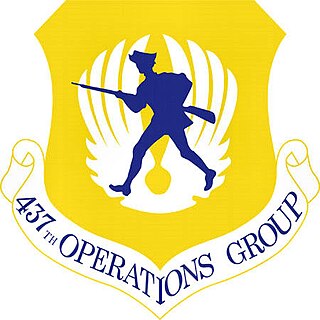
The 437th Operations Group is an active United States Air Force unit. It is the flying component of the Eighteenth Air Force 437th Airlift Wing, stationed at Charleston Air Force Base, South Carolina.

The 436th Operations Group is an active United States Air Force unit. It is the flying component of the Eighteenth Air Force 436th Airlift Wing, stationed at Dover Air Force Base, Delaware.
The 132nd Infantry Division was a German division in World War II. It was formed on 5 October 1940 in Landshut, as part of the 11th Wave of Wehrmacht mobilization, and was destroyed in the Courland Pocket in 1945.
The 2nd Tank Division was a division of the Red Army and Soviet Ground Forces, which was formed twice under very different circumstances.
1770 Naval Air Squadron was a Naval Air Squadron of the Royal Navy's Fleet Air Arm. It formed at RNAS Yeovilton on 10 September 1943 as a two-seat fighter squadron and embarked on HMS Indefatigable in May 1944. It took part in several attacks on the German Battleship Tirpitz and other operations in Norwegian waters before sailing for the Far East. In 1945, as part of the British Pacific Fleet, the squadron took part in attacks on Sumatra, Sakishima Gunto and Formosa. It disembarked to Australia in June 1945 and then disbanded on 30 September 1945 at RAAF Maryborough.
References
This article incorporates text from the public domain Dictionary of American Naval Fighting Ships .